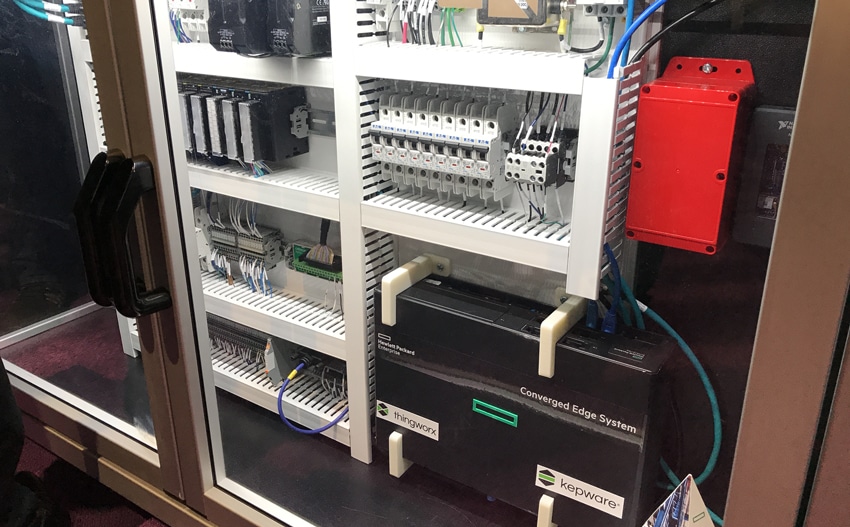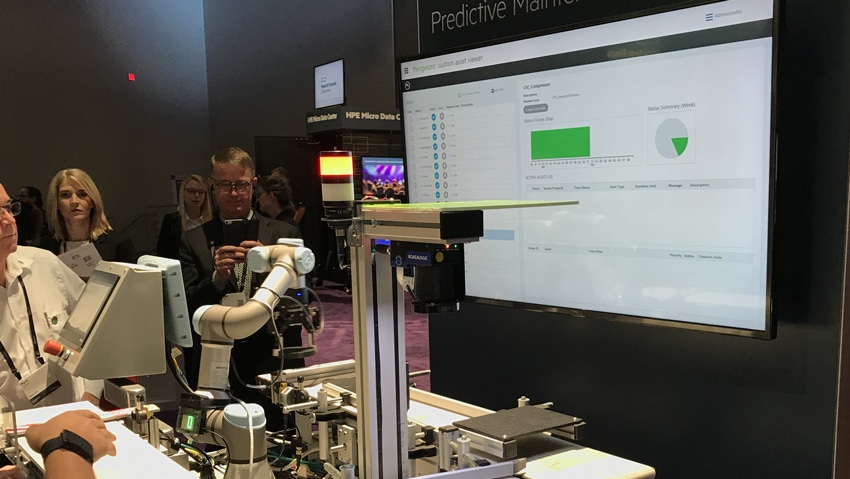This year at HPE Discover in Las Vegas, Hewlett Packard Enterprise (HPE) announced that it was expanding its Edgeline Converged Edge Systems to better tackle the growing Internet of Things (IoT) market. HPE is expanding its current convergence with a new software product category called Software Defined OT. The first three solutions in this category are HPE Edgeline Services Platform, HPE Edgeline Data Aggregation App, and HPE Edgeline Address Translation App.
This year at HPE Discover in Las Vegas, Hewlett Packard Enterprise (HPE) announced that it was expanding its Edgeline Converged Edge Systems to better tackle the growing Internet of Things (IoT) market. HPE is expanding its current convergence with a new software product category called Software Defined OT. The first three solutions in this category are HPE Edgeline Services Platform, HPE Edgeline Data Aggregation App, and HPE Edgeline Address Translation App.
As more companies are seeing value in Operational Technology (OT) data found in smart things, the IoT market will keep swelling. However this new influx of connected things won’t be as beneficial if companies can’t find a way to store and analyze the data, not to mention deciding what data merits the storage and analysis. HPE has been working for some time to help its customers acquire, analyze, and act on the data to make them more efficient. As part of the solution HPE introduced its Edgeline Converged Edge Systems a year ago bring what it is calling the convenience of a smartphone to a system (everything one needs in a single box). Today they are taking the next step by software defining OT functions onto their open, x86 Edgeline Systems.
The new Software Defined OT solutions include:
- HPE Edgeline Services Platform – the foundation of software upon which HPE and its partners will deliver applications and services that enable HPE to implement Internet of Things (IOT) solutions for its customers. These IOT solutions are designed to run outside the datacenter or cloud — at the edge where the customers’ operations occur (e.g. in a factory, a refinery, on a moving vehicle or spread throughout a city).
- HPE Edgeline Data Aggregation App – an operations technology (OT) software app that ingests and combines data from multiple existing or new OT devices such as Programmable Logic Controllers (PLCs) and Supervisory Control and Data Acquisition (SCADA) systems and aggregates it together in a single data collection.
- HPE Edgeline Address Translation App – converges the task of network addresses translations from a larger network (e.g. within an entire factory) to one or more subset networks (e.g. a specific manufacturing line in a factory). It uses software defined configuration to control its activities, enabling it to be easily managed and orchestrated remotely.
These new solutions aim to provide a strong edge-based foundation for acquiring and managing data from a variety of sources. To deliver insights faster and more efficiently that facilitate actions, customers will also have access to analytics and cloud based services. On top of this, HPE is also announcing its HPE Edgeline Innovation Network. This new network allows collaboration between third-parites such as ISVs, IHVs, customers, and partners. HPE will be providing complimentary Edgeline engineering development services and the use of its HPE Global IoT Innovation Labs to help everyone get started.
Harvesting all of the data and gaining insights into what IoT has to offer sounds great in theory, and most of the time when it is being talked about it is in a theoretical manner. However, HPE has been work with a family-owned chemical processing plant in Galena Park, Texas, Texmark Chemicals, Inc., to help them build the “refinery of the future.” Texmark and HPE have been using IoT technologies to make the refinery safer and more efficient while providing greater business value to its customers.
The insights that Texmark is gaining include asset tracking and lifecycle management, predictive maintenance, worker safety, video analytics, and more. Worker safety is key in Division 1 conditions. To this end, HPE installed an Aruba instant wireless access point (iWAP) in a heavy-duty box specially designed for deployment in possibly hazardous Division 1 conditions. The enclosure can detect a spark and protect it from spreading.
Texmark has deployed Aruba WiFi technology in the plant, which allows other hardware to be utilized including Aruba BLE Beacons and location-based software like Meridian—a first in the industry for HPE. This equipment enables services such as indoor/outdoor wayfinding, as well as location-based services, and content within the refinery. The company can use data from those services to automate processes and help ensure workers are operating in a safe environment. Texmark also has an HPE Edgeline EL4000 converged edge systems on site, enabling them to perform near-real-time advanced video analytics on the video as it is streaming.
Sign up for the StorageReview newsletter


